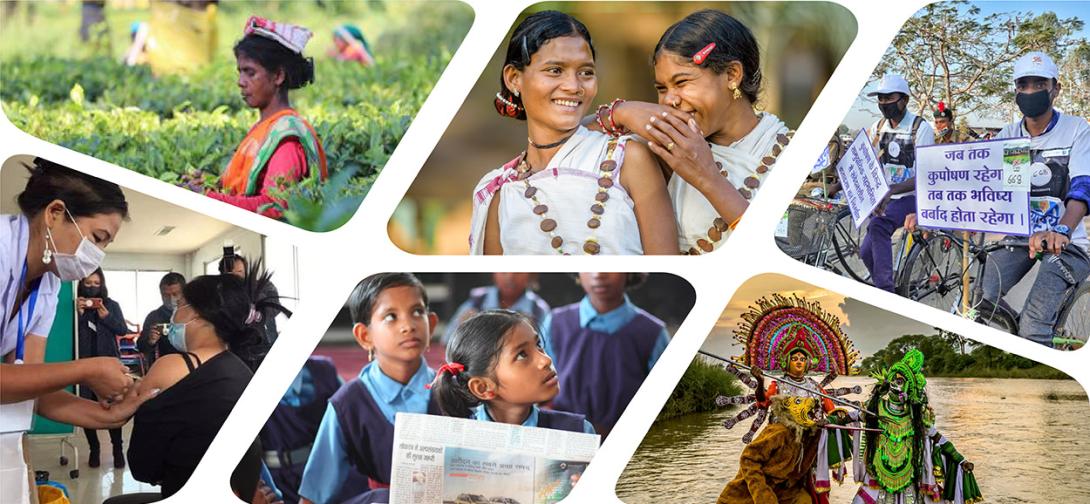Anemia Alert: Is the Government Aiming for Cost-Effective Interventions?
Micronutrient deficiencies, also known as 'hidden hunger', are determining and aggravating factors for health status and quality of life. Vitamin and mineral deficiencies impose a significant burden on the affected persons and societies, both in terms of health costs and negative impacts in lost human capital and reduced economic productivity. Hidden hunger impairs physical growth and learning, limits productivity, and ultimately perpetuates poverty in a continuous cycle. This affects an individual, entire labor force and eventually stalls the National economic development.
There is sufficient evidence that micronutrient deficiencies are common and co-exist throughout the life cycle. Out of all, Anemia is a major public health problem in India which affects over half of the population in almost all age groups. It has a devastating effect on human health and affects the overall socio-economic development. Physical and cognitive losses due to Iron Deficiency Anemia (IDA) costs the developing countries up to 4.5% loss in GDP per annum, which is 1.18 percent of GDP in India, thereby stalling social and economic development.
Women under reproductive age group are most vulnerable when it comes to IDA. This further gets exacerbated during pregnancy, which is likely to influence maternal, fetal, and newborn health. The prevalence of anemia amongst pregnant women has been consistently remained around 50% since over last four decades. This projected a negative -26.51% impact of the program, causing 5.25 days lost per person. Hence, if a pregnant woman is suffering from Iron Deficiency Anemia, she is likely to lose approximately 5.25 days of her life. From the Cost Effectiveness Calculations, it was revealed that it can cost approximately $75.97 (5063.47 INR) for each DALY lost due to Iron deficiency Anemia during pregnancy. This loss is larger when calculated for the entire population of pregnant women of our nation.
India has a long history of various Government-run programs like Integrated Child Development Scheme (ICDS), National Nutritional Anemia Control Program (NNACP), Weekly Iron and Folic Acid Supplementation (WIFS), National Iron Plus Initiative (NIPI), etc to combat anemia. The fact is that in spite of all the programs, no marked improvement had been noticed in the magnitude of anemia. There are evidences that despite the pregnant women receiving 100 IFA tablets free of cost; the prevalence of anemia has still remained alarming. Research reveals that the compliance rate of IFA is as low as around 30%. To overcome this, there was a strong felt need for focusing on Social and Behavior Change Communication (SBCC) at community level. Considering this, the present Government decided to give a right impetus and focus for driving the existing programs into a full-fledged Mission. Hence, by political will to strengthen the existing mechanisms and foster newer strategies, Anemia Mukt Bharat was launched in September 2018 for combating anemia.
The Anemia Mukt Bharat focuses on reducing anemia amongst pregnant women (from 50% in 2016 to 32%) by 2022. Intensive focus will be given on interventions like providing prophylactic IFA supplementation, deworming, intensified year-round SBCC campaign, ensuring delayed cord clamping in newborns, anemia testing through digital methods and point of care treatment, mandatory provision of IFA fortified foods in Government-funded health programs and addressing Non-Nutritional causes of anemia in endemic pockets, with special focus on malaria, hemoglobinopathies and fluorosis. For these interventions, six institutional mechanisms will be focused on viz- Intra-Ministerial coordination, establishing National Anemia Mukt Bharat Unit, National Centre for Excellence & Advanced research on Anemia Control, convergence with other Ministries, strengthening supply chain and logistics and Anemia Mukt Bharat Dashboard and Digital portal - One-stop show on Anemia.
With the launch of Anemia Mukt Bharat Mission, Government is aiming towards cost effective interventions, stepping to bring down the number of DALYs lost due to anemia amongst all target beneficiaries by 2022. NITI Aayog looks forward for NFHS V data to give positive outcomes of the mission projecting reduced anemia levels in upcoming years.
*Khushboo Saiyed is a Young Professional, NITI Aayog. Views expressed are personal.
*Sources
Dhaliwal et al, WHO, UNICEF, NFHS, DLHS, NIPI, Anemia Mukt Bharat
*Image credits: Times of India, CINI & clickittefaq.com
 National Portal Of India
National Portal Of India 


